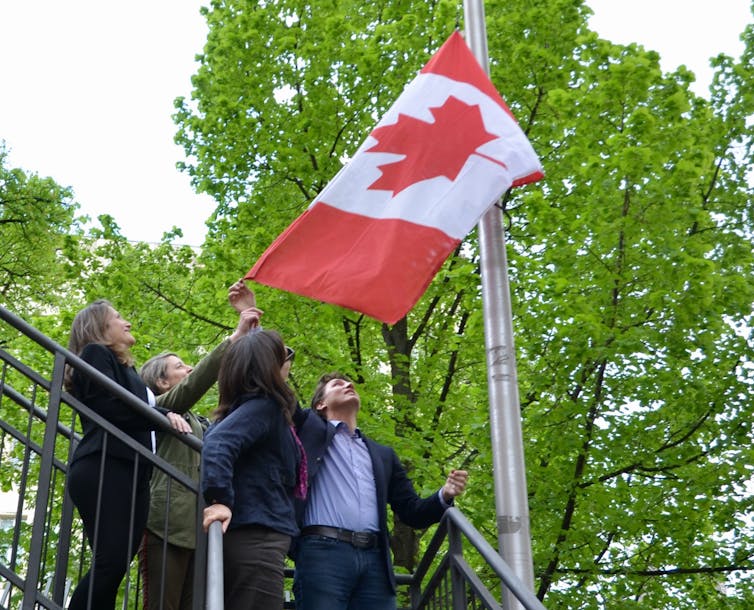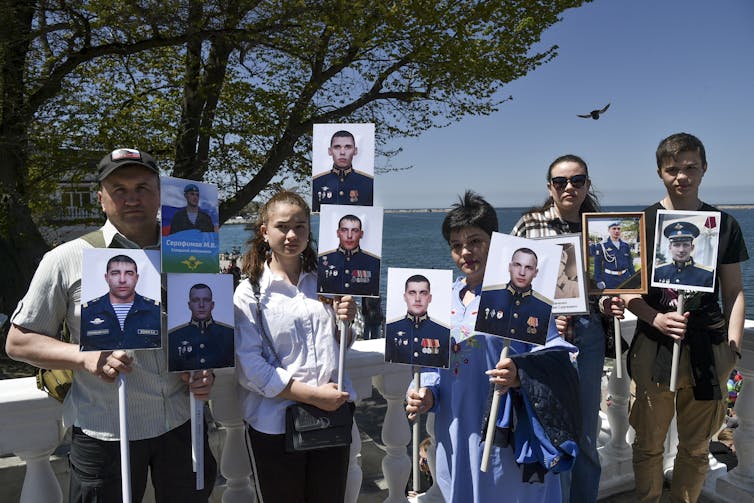
Alexander Hill, University of Calgary
At the beginning of Russia’s invasion of Ukraine, Vladimir Putin reminded the West that Russia had nuclear weapons by putting them on “special combat readiness.”
Putin’s actions suggested that Russia was considering their use, even though actually launching them was a remote possibility. In precisely what circumstances Russia might use nuclear weapons was left vague — Putin’s intent was presumably to frighten NATO and discourage its intervention on behalf of Ukraine.
Since then, much has changed — and not for the better in terms of the risk of nuclear war.
Although NATO hasn’t sent troops to fight in Ukraine, the West has implemented increasingly tough economic sanctions against Russia and provided Ukraine with military equipment like tanks.
NATO is now involved in what is, in essence, a full-fledged proxy war against Russia. Not only have NATO nations — particularly the United States — provided Ukraine with an array of different weapons, but they are clearly helping Ukraine with other elements of its war effort, including intelligence — some of which has been used to target Russian generals.
Ukraine emboldened
From the failure to take Kyiv to the plodding pace of Soviet gains in the Donbas region in eastern Ukraine, the war has not gone according to plan. Russia has taken heavy losses due to the intense Ukrainian resistance.
Russian troops will likely dig in and seek to consolidate their gains in the east. Reasserting independence from Ukraine for the separatist regions — backed up by troops on the ground — could be presented by Putin as a Russian win. He could then declare his “special military operation” over.
Ukraine could subsequently reach some sort of peace agreement with Russia involving loss of territory — one that probably wouldn’t be much different from the sort of agreement that could be negotiated today.
Currently there is no sign of Ukrainian inclination to negotiate over the Donbas region. Nor is Ukraine willing to formally give up Crimea, seized by Russia in 2014 after the pro-western and anti-Russian Euromaidan revolution in Ukraine.
Ukrainian President Volodymyr Zelenskyy has made clear his war aim is to liberate all Ukrainian territory in Russian hands, including Crimea. His NATO backers — most vocally the U.S., the U.K. and Canada — are willing to provide Ukraine with the means to do so.
These countries hope to see Russia come out of this war significantly weakened as a regional power.

The Russian nuclear threat
While committing NATO forces directly to Ukraine is unlikely, some hawkish western commentators have suggested NATO could do so without Russia retaliating with nuclear weapons.
Even though Russia raised the spectre of nuclear weapons at the beginning of the war, as it progressed, Russian sources suggested that nuclear weapons would only be used in the event of an existential threat to Russia.
Recent Russian nuclear sabre-rattling — such as the testing and deployment of more advanced missiles or Russian TV segments showing the impact of a nuclear attack on the U.K. — is undoubtedly cause for concern, but it doesn’t make the use of nuclear weapons significantly more likely in the short term.
What would?
If the war was to turn in Ukraine’s favour and Ukrainian forces started not only to recapture swaths of territory in the east, but to threaten the separatist regions — or Crimea.
Some western observers have suggested that Russia might employ an “escalate to de-escalate” strategy in such circumstances, using tactical nuclear weapons. Launching them in territory likely to be held by the enemy, instead of where Russia hopes to retain control, makes a lot more sense.
If the war escalates to the point where a western-backed Ukraine threatens territory Putin considers to be Russian, then the chances of nuclear weapons being employed would increase dramatically.
The problem of Crimea
Zelenskyy has suggested that Ukraine will not stop fighting until Crimea is in Ukrainian hands. But for Putin and many Russians, Crimea is Russian.
Crimea’s incorporation into Ukraine in 1954 is often seen as a historical accident, rather than an expression of Crimea being ethnically Ukrainian.

Crimea’s Tatar population was largely displaced by ethnic Russians — not Ukrainians — and it has a long history as Russian. From Leo Tolstoy’s Sevastpol Sketches, for example, to Vasily Aksyonov’s 1970s novel The Island of Crimea, Crimea is widely represented in Russian literature.
A credible western-backed threat to Crimea would undoubtedly constitute the sort of existential threat to Russian territory that would dramatically increase the risk of nuclear weapons being used.
A distant but increased nuclear threat
Putin’s frustration over Ukrainian resilience and western support is clearly increasing — recent nuclear posturing is evidence of that. The nuclear threat has been increasing since February, even if the use of nuclear weapons probably isn’t imminent.
Even the use of low-yield tactical nuclear weapons by Russia would likely provoke some sort of western response. Such a response would then increase the likelihood of further escalation. Informed estimates suggest Russia has more than 1,900 non-strategic or tactical nuclear weapons. The threshold for their use is lower than for larger nuclear weapons.
The sort of scenarios that might lead to the use of nuclear weapons are outside the immediate confines Putin’s war in Ukraine. It would require a significant deterioration in Russian fortunes — and greater western involvement in the conflict.
Nonetheless, not since the Cuban Missile Crisis in 1962 or nuclear tensions in the early 1980s has the spectre of potential nuclear war loomed so large in the future.
Back in 1962, politicians on all sides ultimately showed their statesman-like qualities and stepped back from their threat to employ nuclear weapons. We can only hope that their successors will do the same over Ukraine.![]()
Alexander Hill, Professor of Military History, University of Calgary
This article is republished from The Conversation under a Creative Commons license. Read the original article.

